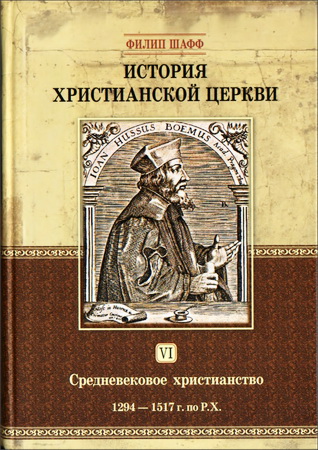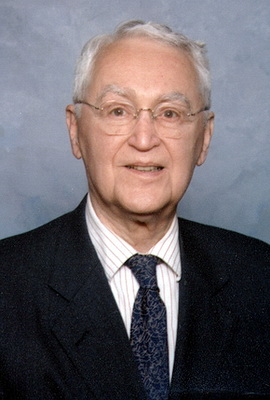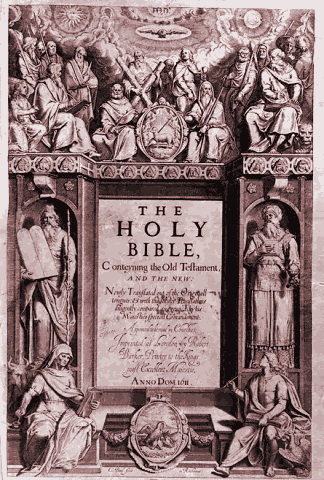
Pelikan - Christian Tradition 1-5

Christian Doctrine and Modern Culture is the fifth and final volume of my history of the development of Christian doctrine, and it has in many ways turned out to be the “Sorgenkind,” as my friends (including Albert C. Outlet and the late William A. Clebsch) had been warning me, both in person and in print, that it would be. I first began planning and outlining The Christian Tradition (though not yet under that title) in the 1940s, and my earliest drafts and sketches for it go back to the 1950s. I was quite sure all along that I wanted to begin the account in the first volume only after the New Testament, but I was much less sure just where to end the fifth volume, dealing with the modern period. The Amsterdam assembly of the World Council of Churches in 1948 gave me a possible “terminus ad quern,” as did the promulgation of the assumption of the Virgin Mary by Pope Pius XII in 1950. But by the time I was ready to publish volume 1, which appeared in 1971, the actions of the Second Vatican Council had made it clear that I ought to conclude my history of church doctrine in the modern period, and therefore the work as a whole, with that event.
Only gradually, moreover, had I sharpened my focus on the history of the development of church doctrine, as distinguished from the history of Christian thought in general. My treatment of the modern period is, of course, the one most affected by that specification of focus. Over the years I have in fact lectured and written far more about the history of theology in these past two or three centuries than about the history of church doctrine—more about the Enlightenment than about Pietism, more about Kierkegaard than about Grundtvig, more about Tolstoy than about Soloviev, and, for that matter, more about Harnack than about Newman. As the editor of a five-volume series of monographs entitled Makers of Modern Theology and of a three-volume collection of sources in translation entitled Twentieth-Century Theology in the Makings I would have been at least as ready to write the history of modern theology (although not in one volume) as the history of doctrine. Indeed, when I began teaching, I was assigned a course called “History of Dogma” in the curriculum and another called “History of Modern Theology”; subsequently I taught a three-course series called “History of Christian Thought.” Thus I would have found it easy—all too easy—to give the systems of the last two and one-half centuries, and especially the theological trends of the twentieth century (many of whose leaders I had known personally and in some of whose developments I had even had some part), considerably more than their fair share of space.
Yet it was appropriate that the epigraph for the first volume of this work should have linked the names of Newman and Harnack. As my readers and critics have frequently commented, the successive volumes of the work do seem to oscillate between the methodologies suggested by those two names, and this fifth and final volume (in which Newman and Harnack themselves appear for the first time as actors in the drama rather than merely as playwrights) does so more explicitly than did any of its predecessors. For the modern period in the history of Christian doctrine may be defined as the time when doctrines that had been assumed more than debated for most of Christian history were themselves called into question: the idea of revelation, the uniqueness of Christ, the authority of Scripture, the expectation of life after death, even the very transcendence of God. It was also a time when the relation between the three terms “believe, teach, and confess,” with which the first volume of this work opened in defining Christian doctrine, was basically revised: theologians often “confessed” more than they “believed,” perhaps more than they “taught.” But volume 5, too, bears the title The Christian Tradition, and that has had to determine the selection of topics and of authors. It has likewise dictated that the use of the Christian past—of tradition, creed, and dogma—by the church in the modern period bulks large in this narrative, much larger than it does in most histories of modern theology.
Jaroslav Pelikan - The Christian Tradition. A History of the Development of Doctrine - Volume 5 - Christian doctrine and modern culture (since 1700)
The University of Chicago Press, Chicago and London, 1991. - 413 pp.
ISBN 0-226-65378-1 (cloth)
ISBN 0-226-65380-3 (paperback)
Jaroslav Pelikan - The Christian Tradition. A History of the Development of Doctrine - Volume 5 - Christian doctrine and modern culture (since 1700) - Contents
Preface
Primary Sources
“Alas, Theology, Too”
1. The Crisis of Orthodoxy East and West
2. The Objectivity of Transcendent Revelation
3. The Theology of the Heart
4. Foundations of the Christian World View
5. The Definition of Doctrine
6. The Sobornost of the Body of Christ
Selected Secondary Works
Index: Biblical
General
Jaroslav Pelikan - The Christian Tradition. A History of the Development of Doctrine - Volume 4 - Reformation of Church and Dogma (1300-1700)
The University of Chicago Press, Chicago and London, 1984. - 477 pp.
ISBN 0-226-65376-5 (vol. 4)
Jaroslav Pelikan - The Christian Tradition. A History of the Development of Doctrine - Volume 4 - Reformation of Church and Dogma (1300-1700) - Contents
Preface
Primary Sources
Reformation Defined
1. DOCTRINAL PLURALISM IN THE LATER MIDDLE AGES
2. ONE, HOLY, CATHOLIC, AND APOSTOLIC?
3. THE GOSPEL AS THE TREASURE OF THE CHURCH
4. THE WORD AND THE WILL OF GOD
5. THE DEFINITION OF ROMAN CATHOLIC PARTICULARITY
6. CHALLENGES TO APOSTOLIC CONTINUITY
7. CONFESSIONAL DOGMATICS IN A DIVIDED CHRISTENDOM
Selected Secondary Works
Index: Biblical
General
Jaroslav Pelikan - The Christian Tradition. A History of the Development of Doctrine - Volume 3 - The Growth of Medieval Theology (600-1300)
The University of Chicago Press, Chicago and London, 1978. - 363 pp.
ISBN 0-226-65374-9 (cloth)
ISBN 0-226-65375-7 (paper)
Jaroslav Pelikan - The Christian Tradition. A History of the Development of Doctrine - Volume 3 - The Growth of Medieval Theology (600-1300) - Contents
Preface
Primary Sources
The Middle Ages as "Age of Faith"
1. THE INTEGRITY OF THE CATHOLIC TRADITION
2. BEYOND THE AUGUSTINIAN SYNTHESIS
3. THE PLAN OF SALVATION
4. THE COMMUNICATION OF GRACE
5. THE ONE TRUE FAITH
6. SUMMA THEOLOGICA
SelectedSecondary Works
Index: Biblical
General
Jaroslav Pelikan - The Christian Tradition. A History of the Development of Doctrine - Volume 2 - The Spirit of Eastern Christendom (600-1700)
The University of Chicago Press, Chicago and London, 1974. - 354 pp.
ISBN 0-226-65372-2
Jaroslav Pelikan - The Christian Tradition. A History of the Development of Doctrine - Volume 2 - The Spirit of Eastern Christendom (600-1700) - Contents
Preface
Primary Sources
Ex Oriente Lux
1. The Authority of the Fathers
2. Union and Division in Christ
3. Images of the Invisible
4. The Challenge of the Latin Church
5. The Vindication of Trinitarian Monotheism
6. The Last Flowering of Byzantine Orthodoxy
Selected Secondary Works
Index: Biblical
General
Jaroslav Pelikan - The Christian Tradition. A History of the Development of Doctrine - Volume 1 - The Emergence of the Catholic Tradition (100-600)
The University of Chicago Press, Chicago and London, 1971. - 419 pp.
ISBN 0-226-65370-6
Jaroslav Pelikan - The Christian Tradition. A History of the Development of Doctrine - Volume 1 - The Emergence of the Catholic Tradition (100-600) - Contents
Preface
Primary Sources
Some Definitions
1. Praeparatio Evangelica
2. Outside the Mainstream
3. The Faith of the Church Catholic
4. The Mystery of the Trinity
5. The Person of the God-Man
6. Nature and Grace
7. The Orthodox Consensus
Selected Secondary Works
Index: Biblical
General




Комментарии
Пока нет комментариев. Будьте первым!